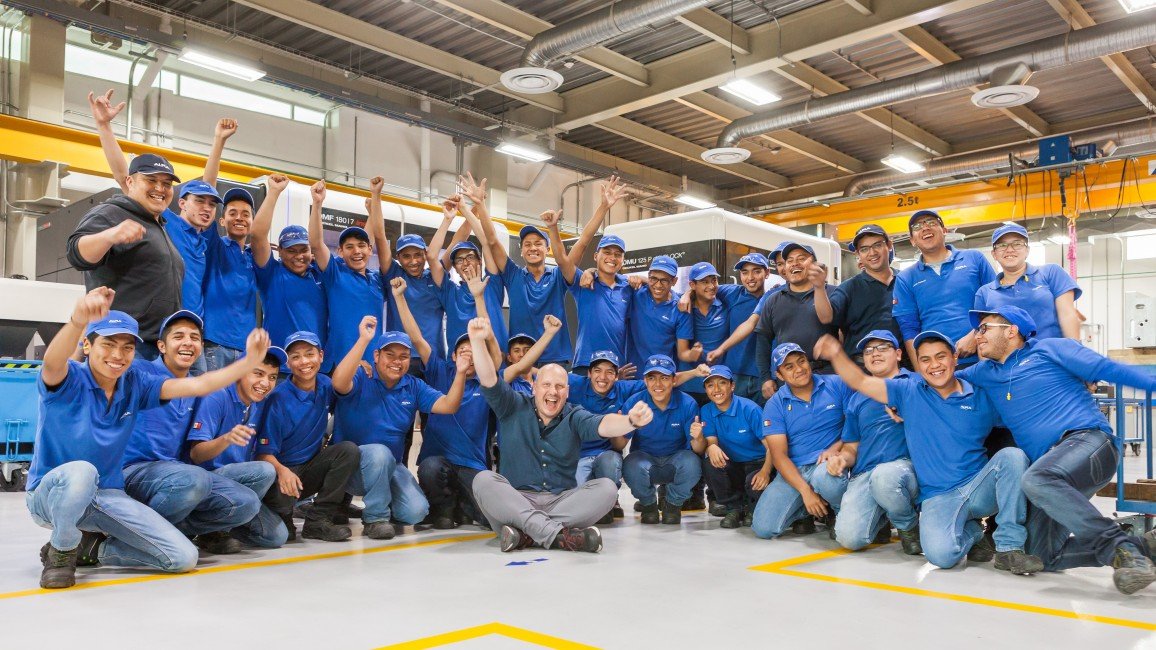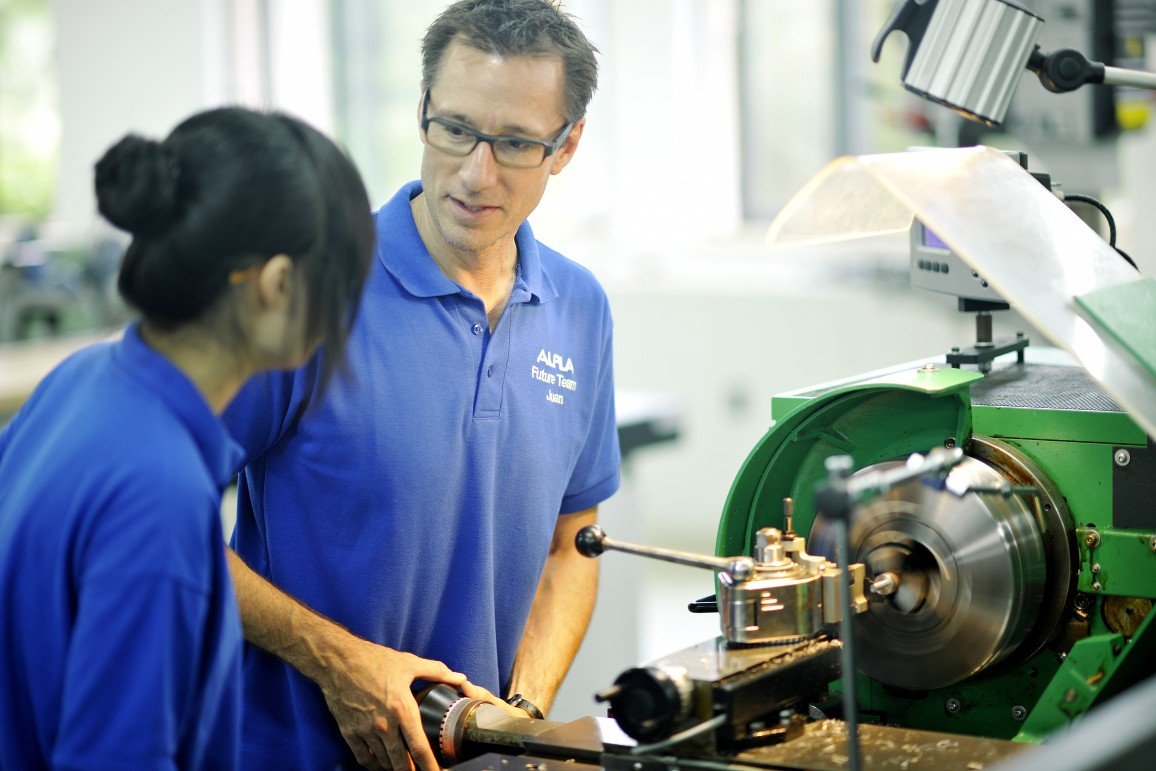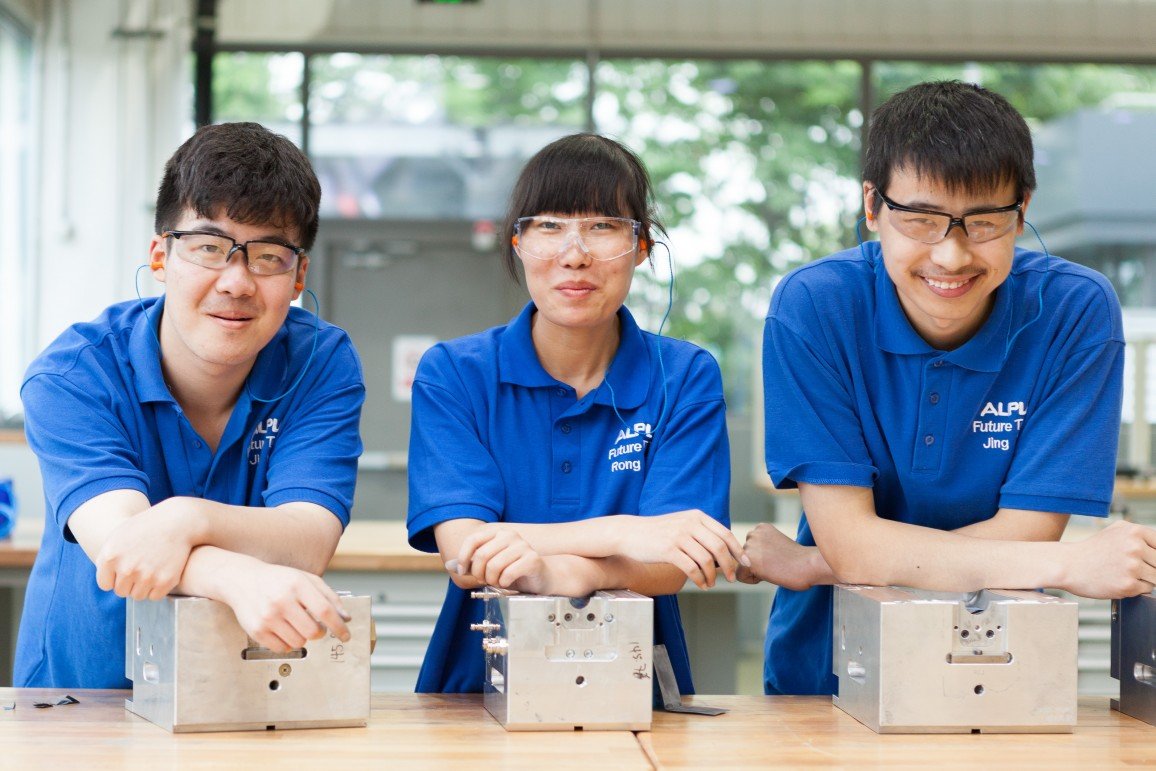Implementing the dual education system: the success, the challenges and the future

The shortage of skilled labour is an issue that companies all around the world have to face. There are, of course, many initiatives and programmes that are designed by governments and companies themselves to solve this issue. So far there hasn’t been one clear solution to this problem that has proven to be the answer to everything. However, several companies such as Volkswagen and Bosch are trying to tackle this problem by using forms of the dual education system that is popular in Austria, Germany and Switzerland. In this system, apprentices spend around 30 per cent of their training in school and around 70 per cent at a company. At ALPLA, we are facing the same issue, but, in order to make sure that we can offer the same quality in our packaging solutions no matter where they are produced, we decided to introduce our Austrian apprenticeship system in Mexico and China.
The sunny side of the dual education system
There are a number of advantages of the apprenticeship format, which we are hoping to achieve in Mexico and China. As the apprentices are involved in the company’s everyday life, it is easier to assign tasks according to their ability and offer practical experience from the very start. No matter which area they are completing their apprenticeship in, they will then be experienced in a real working environment. Also, once the apprenticeship is complete, the company can gain an employee that knows the company’s workflow. For the apprentices themselves, another plus is that they can earn money while learning. In the end, the dual education system can provide the market with highly skilled workers that will contribute directly to improving or maintaining the quality of services and goods for a company.
We are very lucky to have great partners for the theoretical part of the apprenticeship. In China we, together with Engel, ODU and, from this autumn on, STIWA, work with Shanghai Information Technology College, which provides our young students with an excellent education. In Mexico we execute the practical as well as the theoretical part ourselves, but have great support from several organisations such as Austrian Development Agency and CONALEP, which is an educational institution for vocational schools in Mexico. Although we only introduced this programme in both countries in 2013, we’ve already been able to benefit from the first fruits of the hard work. This February, our third round of final-year apprentices in Mexico completed the programme with exceptional results.

The pitfalls of the dual education system
We can’t pretend that introducing a foreign system in a new country is a piece of cake. Of course, there are various regulations that need to be followed and we need to make sure that we provide training material that is of a high standard. At the end of their training, apprentices take a test which is the same level as the tests that are taken by apprentices in Austria. The issue here can be that the standard of high-school education may be lower in certain regions. Therefore, finding the right students or giving them additional training is an additional point we have to consider. An argument that is frequently raised about vocational training is that it only deals with skills that are closely related and focused on the employment opportunities and processes of a particular company. However, the Austrian, Chinese and Mexican curricula are fairly broad. We constantly focus on training our employees in a wide range of tasks to make sure they can adapt to different environments and a world that is changing quickly and continuously. It is definitely a point that we need to keep in mind.
The future of the dual education system
Since our programme is still fairly young and only our second set of Chinese apprentices will be graduating this June, it is too early at this point to draw any conclusions and we are constantly learning new things and improving. What we can say, however, is that we currently have a considerably high percentage of graduates working for us that do excellent work and are highly valued colleagues. We think we can link this fact to their early and deep involvement in the company, which is possible thanks to the dual education system. We have motivated and determined apprentices in China and Mexico that will add to our highly skilled workforce and ensure the high quality of our products. We are excited to see what’s to come and are currently thinking about implementing this system in other countries as well.

Do you like our texts? Perhaps even so much that you want to use them in your own media? Then please get in touch with us beforehand!
